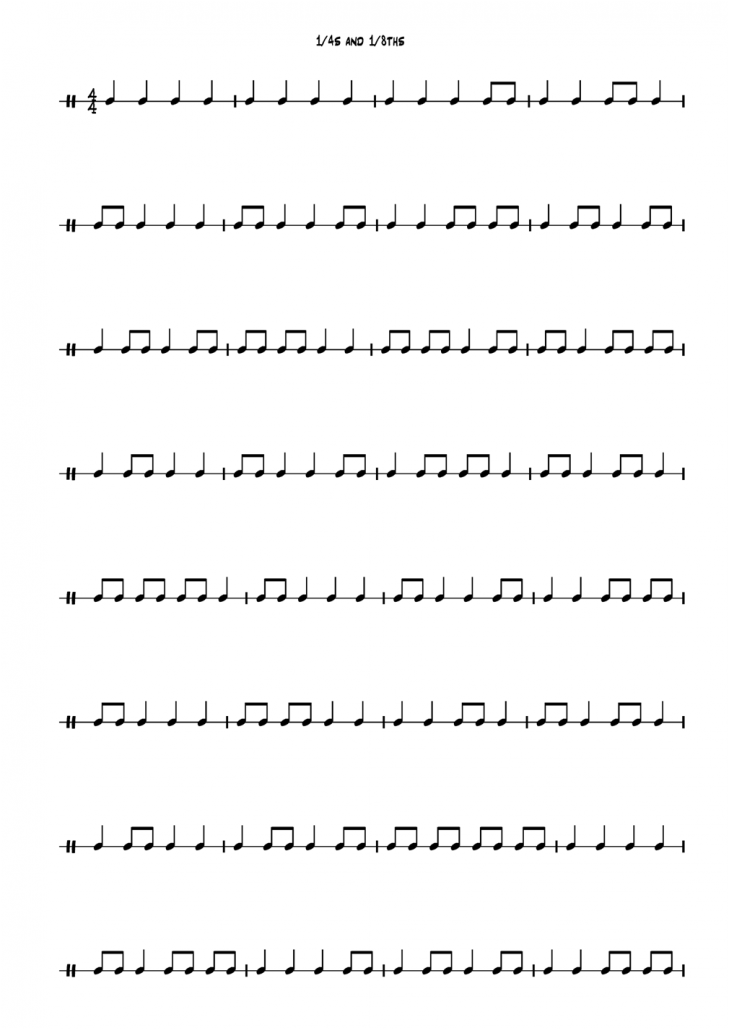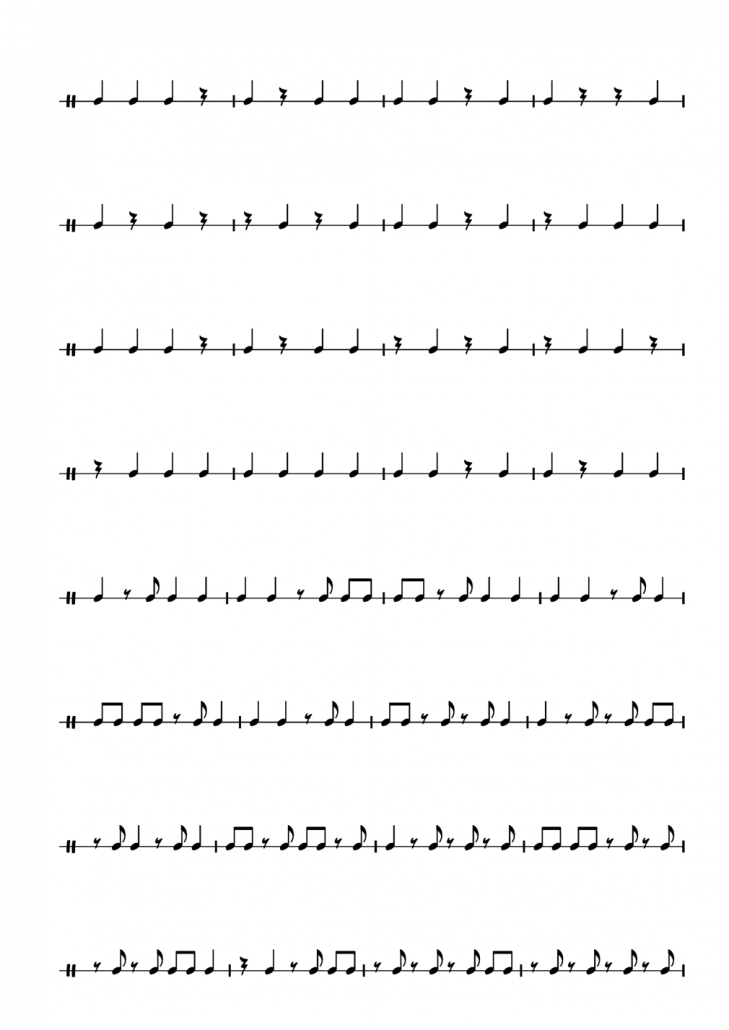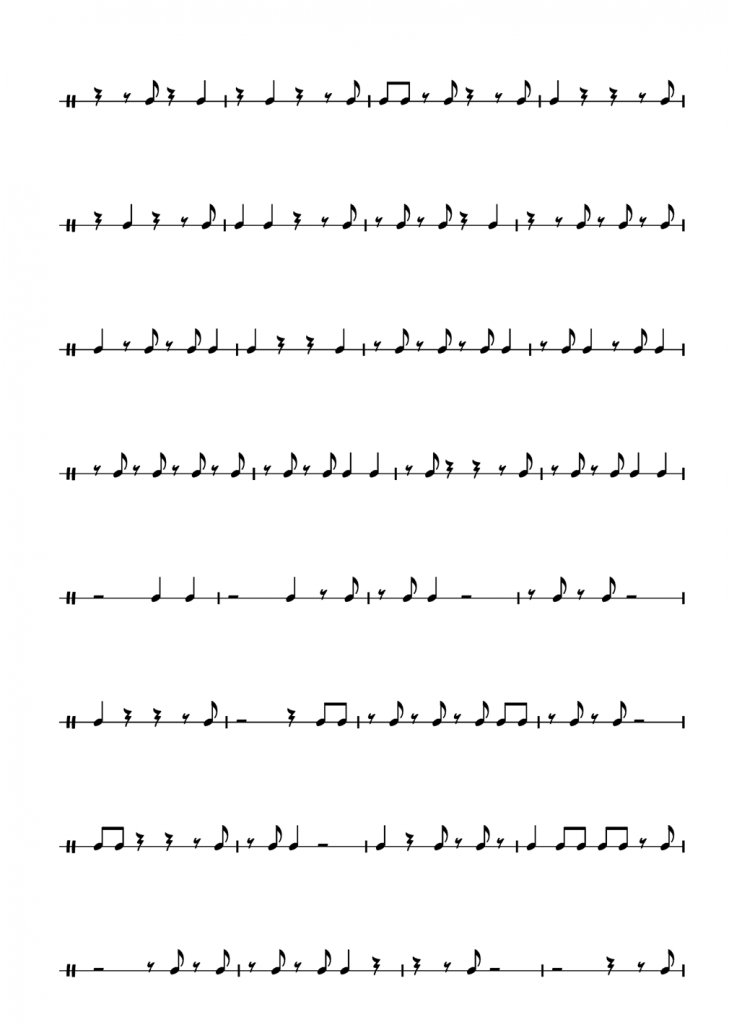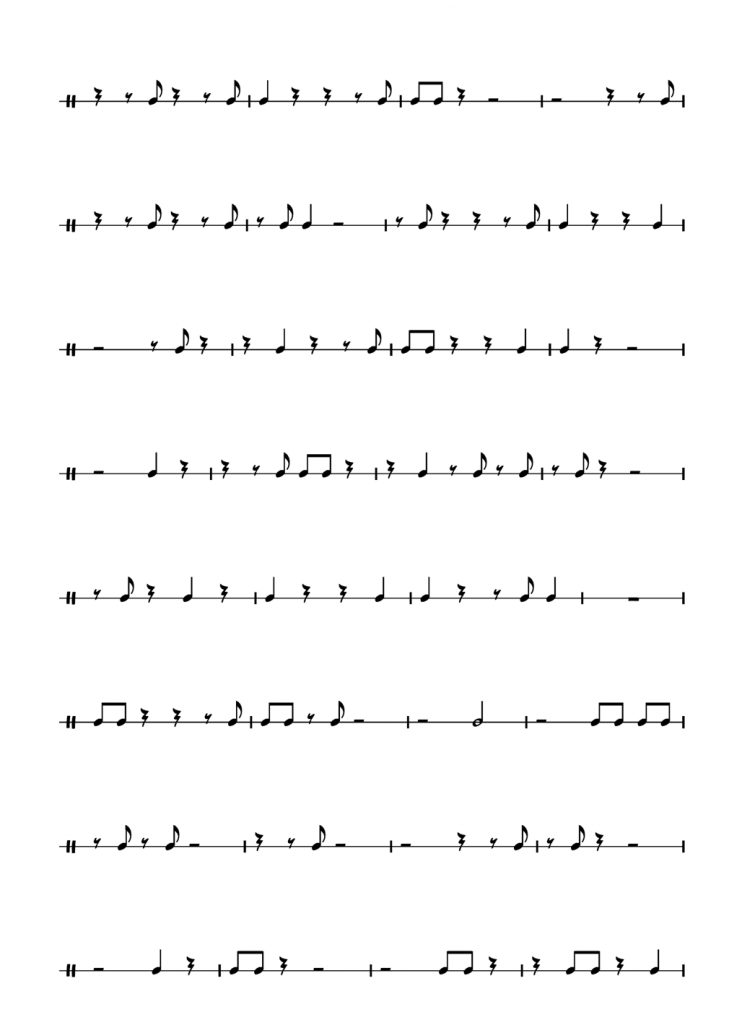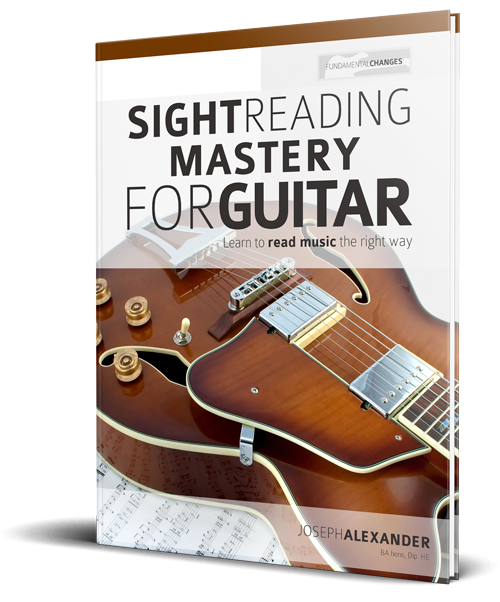Read Rhythm on Guitar: An Essential Guide
This important lesson on how to read rhythm on guitar is intended to be studied alongside the pitch and notation exercises in the previous lesson. Working on these skills simultaneously will help you progress most quickly.
While the pitch of a note may be learned in isolation and seen as a fixed point in time, melody is always moving forward. It is therefore essential to understand and recognise the most common rhythms that can occur in the music we play.
The first thing to realise is that while rhythmic permutations are virtually infinite, there are only a certain number that will be useful for our purposes as modern musicians. This is because only a certain number of rhythms form the most playable, singable melodies.
Obviously, if you want to sight read the music of Frank Zappa you may well find yourself looking for additional materials to this book (check out The Frank Zappa Guitar Book for a truly mind-boggling display of written notation!), but in the following pages I have tried to break down, discuss and illustrate the most commonly occurring rhythms in popular music.
In written music, rhythm is broken down into bars and beats.
Bars can be seen as containers for the beats. Each beat is named according to how it divides a standard bar of four beats.
For example, a ‘whole note’ fills one whole bar.
A half note (1/2 note) fills half the bar (we can fit two half notes into one bar).
There are four quarter notes (1/4 notes) in a bar.
There are eight eighth notes (1/8th notes) in a bar and there are sixteen sixteenth notes (1/16th notes) in a bar.
These notes are written in the following manner:
Underneath each note I have shown its equivalent rest value. A rest lasts the same amount of time as a note that has a pitch, however it indicates that there should be silence for the allotted time.
In the UK, there is a different system for naming note lengths:
A whole note = a semibreve
A 1/2 note = a minim
A 1/4 note = a crotchet
A 1/8th note = a quaver
A 1/16th note = a semiquaver
This may seem strange to much of the rest of the world, but our system does have one big advantage compared to the international system: The metric note names of the U.S. system are all based on the premise that there are four beats in every bar.
However, music isn’t always written in 4/4 time (four beats in the bar); you can have 3/4 time, 6/8 time or even 17/16 time. In anything other than 4/4 time there are not four 1/4 notes in the bar.
The U.S. system, does however work very well if we ignore this fairly pedantic fact. It is modern, logical, easier to remember, and doesn’t involve learning quaint English words!
To begin, clap, (or play a muted note) through the following exercise. Set your metronome to 50 bpm and try to tap your foot on the beat. Tapping your foot is the biggest secret to accurate rhythm on guitar.
Read rhythm on guitar example 23:
Note Groupings
1/8th notes and 1/16th notes can be grouped in any mathematical combination as long as we don’t exceed a total of four 1/16th notes in a beat. They can be grouped in the following ways:
Read rhythm on guitar example 24:
Read rhythm on guitar example 25:
Read rhythm on guitar example 26:
Again, tap your foot with a metronome and learn to recognise and feel the sounds and effects of these rhythms.
Any of the notes in the above examples can be replaced with a corresponding rest value.
Apply these rhythms exclusively to one of the melodic example pages you are working on in the previous lesson. Stay with the rhythm for the whole page. Make sure the rhythm is written clearly and in view while you’re doing this because it will help you associate the written rhythm with the way it sounds.
You don’t need your instrument in your hands to practice the following rhythms so they’re great to tap out (quietly!) while on the bus or train.
As with any facet of sight reading, you are aiming for instant recognition and application of the notated music. Even though you are learning rhythm and pitch recognition as separate skills, they will quickly combine in your mind and merge surprisingly quickly. You can hear every exercise on the following pages played as an read rhythm on guitar example.
This is just the tip of the iceberg when it comes to read rhythm on guitar, as we haven’t begun to look at tied, dotted or triplet rhythms.
To master sight reading easily, check out my book Sight Reading Mastery for Guitar… it contains everything you need to know to become an excellent reader very quickly.
“The artists you work with, and the quality of your work speaks for itself.”
Tommy Emmanuel
© Copyright Fundamental Changes Ltd 2025
No.6 The Pound, Ampney Crucis, England, GL7 5SA






